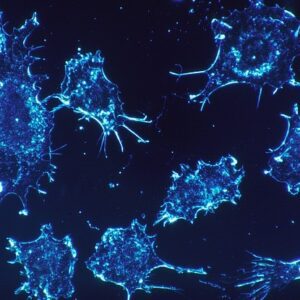Hairy Cell Leukemia
What is hairy cell leukemia?
Hairy cell leukemia is a rare form of cancer that occurs when lymphocytes, a type of white blood cells, are overproduced. These extra cells look hairy under a microscope, hence the name.
This cancer tends to affect more males than females, and it typically occurs in middle-aged people.
What are the symptoms of hairy cell leukemia?
This cancer progresses slowly, which may result in an asymptomatic disease for years. If one does have symptoms, they will include a feeling of fullness in the abdomen that results in a loss of appetite, easy bruising, fatigue, weight loss, recurring infections, and weakness.
There are also complications that may arise due to hairy cell leukemia. People may experience infections, bleeding that is difficult to stop, and anemia. These complications bring their own symptoms as well.
What causes hairy cell leukemia?
The exact cause of this disease is unknown. Medical professionals know that there is a mutation in the DNA of the bone marrow cells that result in the overproduction of malfunctioning white blood cells. They do not know what causes this mutation.
There are risk factors that can increase the chance of developing this cancer. Exposure to radiation and certain agricultural and industrial chemicals may heighten the risk of hairy cell leukemia.
How is hairy cell leukemia diagnosed?
Doctors will begin the diagnostic process with a physical exam. They will follow with blood tests, bone marrow biopsies, and CT scans. These tests will confirm a diagnosis as well as give doctors an idea of the prognosis.
What are the treatments for hairy cell leukemia?
Treatment is not always immediately necessary. Hairy cell leukemia is a slow growing cancer, and monitoring it closely may be the best course of action.
If one does require treatment, chemotherapy, biological treatment, and surgery to remove the spleen are all options.
Where can I find out more about hairy cell leukemia?
Hairy Cell Leukemia Articles

Hairy Cell Leukemia: Drug Combo Achieves Significant Remissions

Ibrutinib Effective for Treating Hairy Cell Leukemia, Study Shows

Two Nonprofits Join Forces to Find a New Hairy Cell Leukemia Therapy






